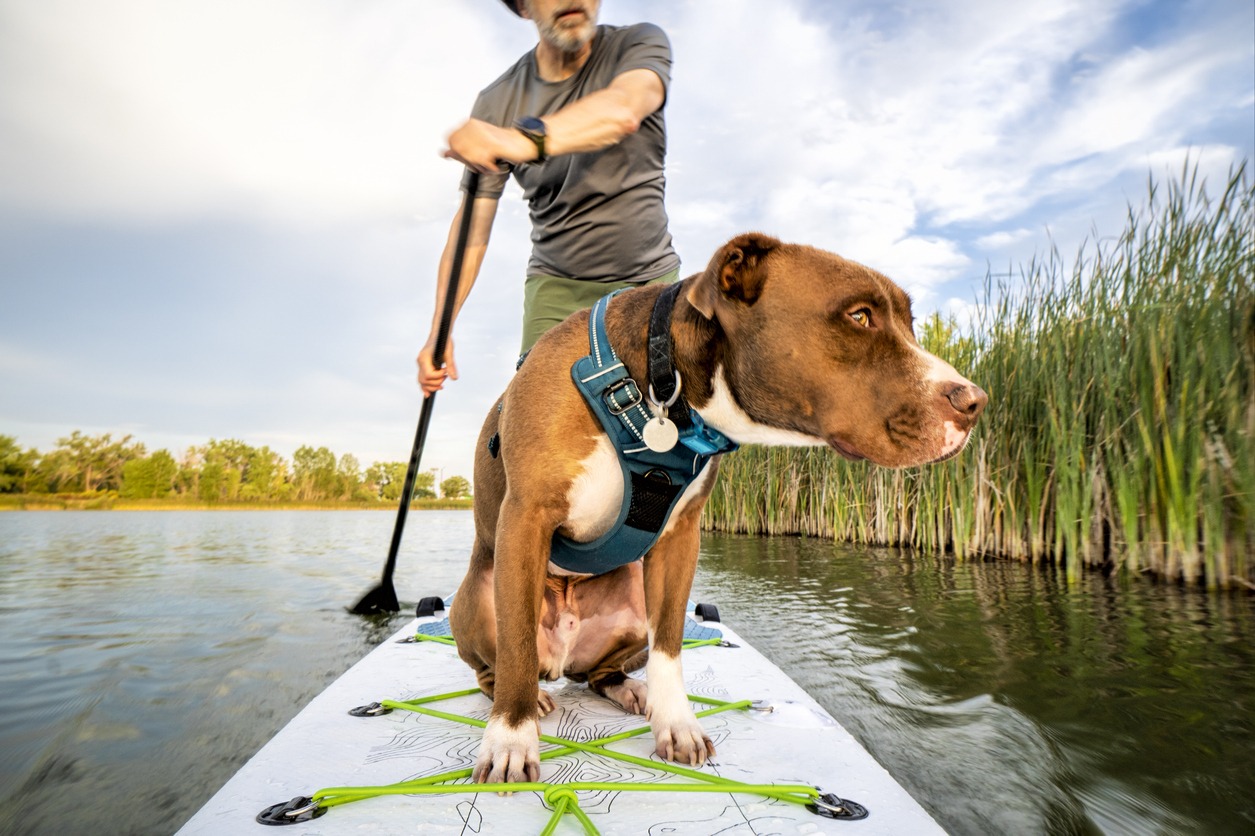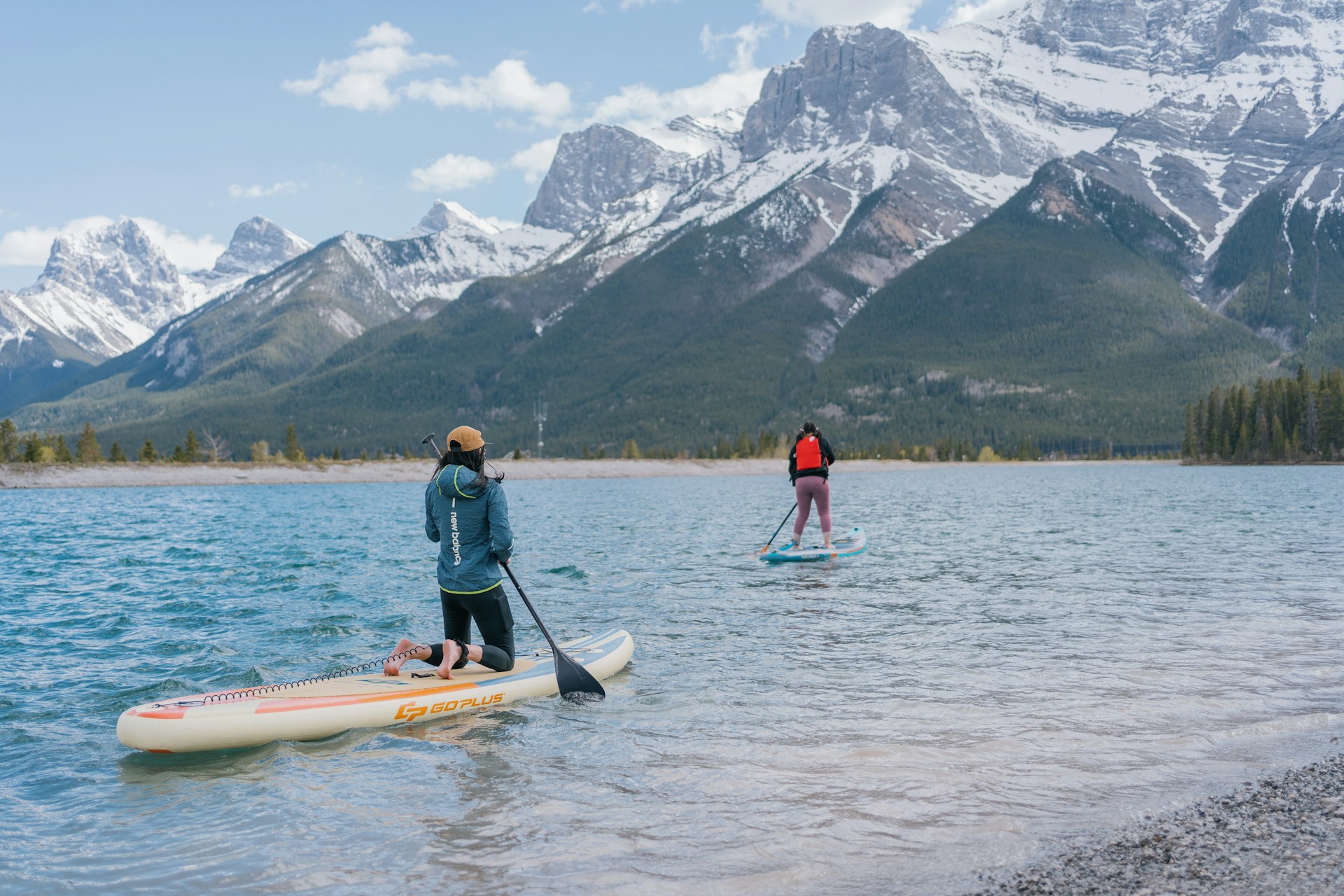How to Handle Cramping While Stand Up Paddleboarding
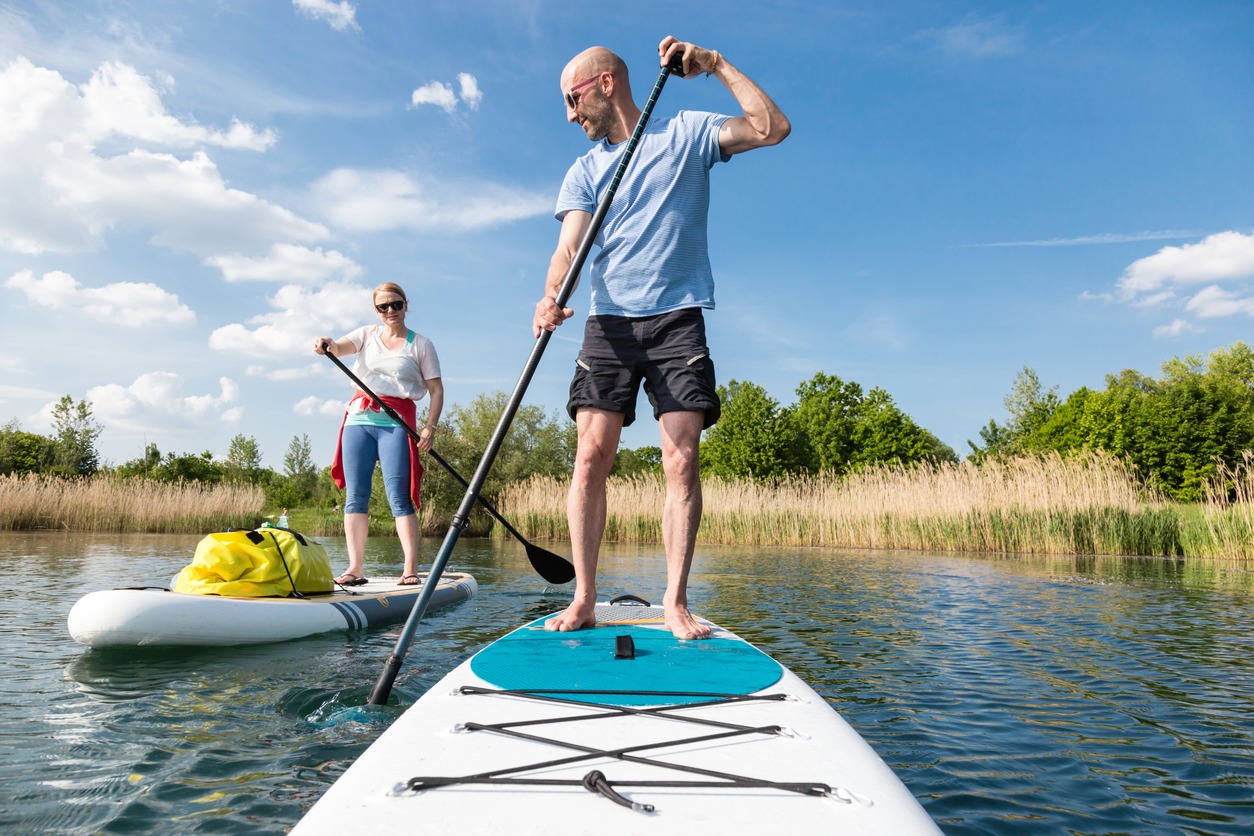
To handle cramping while stand up paddleboarding, stay well-hydrated and maintain proper electrolyte balance. Before paddling, warm up with stretches focusing on your feet, ankles, and lower legs. Use correct paddling form, maintaining a shoulder-width stance with slightly bent knees. Wear supportive footwear and use a padded deck for comfort. If cramps occur, try shifting your weight, wiggling your toes, or gently stretching the affected muscles. Carry a reliable cramp relief product for quick treatment. After paddling, incorporate stretching and massage to aid recovery. By addressing these factors, you'll be better equipped to prevent and manage cramps during your SUP expeditions.
Understanding SUP-Related Muscle Cramps
Why do muscle cramps occur during stand up paddleboarding? As you enjoy your time on the water, you might experience sudden, painful contractions in various muscle groups. These cramps can greatly disrupt your SUP experience and performance. Recognize that stand-up paddleboarding (SUP) carries inherent risks, and understanding the potential hazards, such as falling overboard, can help you better prepare for such situations.
SUP-related muscle cramps often stem from factors like dehydration, electrolyte imbalances, muscle overuse, and improper technique. The static positioning and constant loading on your lower extremities make certain areas particularly prone to cramping. You'll likely feel discomfort in your feet, toes, calves, and hamstrings.
Common locations for SUP-induced cramps include the plantar fascia, metatarsals, and Achilles tendon. Plantar fasciitis, a condition affecting the tissue connecting your heel to your toes, can be intensified by prolonged standing on the paddleboard. Your toes and feet may also experience cramping due to the constant grip required to maintain balance.
To address these issues, it's key to tackle the root causes. Improving your hydration, fueling, and paddling technique can help prevent cramps. Additionally, incorporating proactive measures like using cramp-relief supplements, performing lively stretches, and strengthening your lower body can enhance your comfort and endurance while paddleboarding.
Proper Hydration and Nutrition
Proper hydration and nutrition form the cornerstone of cramp prevention during stand up paddleboarding. To keep cramps at bay, you'll need to stay hydrated before, during, and after your paddling sessions. Maintaining body temperature through sweating is part of homeostasis, so it's essential to replenish lost fluids. Don't wait until you're on the water to start drinking; begin hydrating well in advance of your stand up paddle quest.
As you paddle, you'll lose electrolytes through sweat. Aside from water, important minerals are also lost through sweating, so replenish these indispensable minerals with sports drinks or electrolyte supplements to maintain proper muscle function. Your diet plays a pivotal role too. Incorporate magnesium-rich foods like leafy greens, nuts, and seeds to support your muscles as you maneuver your feet around the board.
Before heading out, fuel up with a balanced meal containing carbohydrates, protein, and healthy fats. This combination will provide sustained energy for those long paddling sessions. While on the water, stay vigilant for signs of dehydration such as dark urine or unusual fatigue. If you notice these symptoms, address them promptly by increasing your fluid intake. By prioritizing proper hydration and nutrition, you'll tremendously reduce your risk of cramping and enjoy a more comfortable stand up paddleboarding experience.
Stretching and Warm-Up Techniques
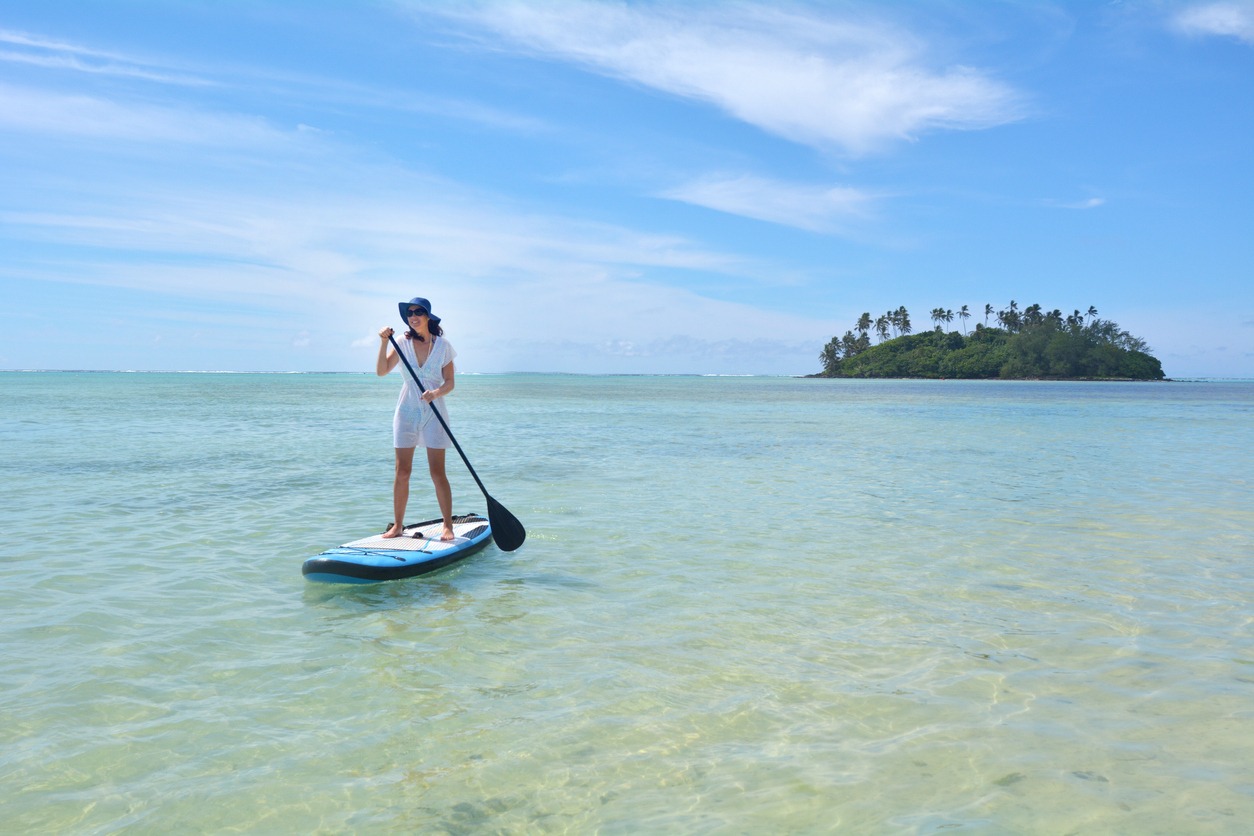
Kick-start your stand up paddleboarding session with targeted stretching and warm-up techniques to minimize the risk of cramping. Begin by incorporating variable stretches that focus on your feet, ankles, and lower legs. This will improve your flexibility and range of motion, essential for maintaining balance on the board.
Engage your intrinsic foot muscles by performing calf raises, ankle circles, and toe curls. These exercises will activate the muscles you'll rely on while paddling. To relieve tension and prevent foot pain, use a foam roller or lacrosse ball to massage your plantar fascia. Don't forget to gently stretch your Achilles tendon and gastrocnemius muscles to ward off stiffness and cramping.
Before hitting the water, spend 5-10 minutes warming up your entire body with light cardio. Jog in place or march to increase blood flow to your extremities. This will prepare your muscles for the demands of paddleboarding and help you move around more comfortably on the board. By incorporating these stretching and warm-up techniques into your pre-paddling routine, you'll greatly reduce your chances of experiencing cramping while out on the water.
Correct Paddling Form
Perfecting proper paddling technique is essential for preventing cramping and optimizing your stand up paddleboarding experience. Stand with your feet shoulder-width apart, knees slightly bent, and your core engaged. As you paddle, keep your arms straight and use your entire body to generate power, not just your arms.
To maintain correct paddling form:
- Reach forward with the paddle, planting it fully in the water
- Pull the paddle back alongside the board, using your core and back muscles
- Remove the paddle from the water when it reaches your feet
- Recover by bringing the paddle forward for the next stroke
Remember to shift your weight slightly with each stroke, transferring power from your legs through your core. Keep your feet parallel and centered on the board for balance. Alternate sides every few strokes to maintain an even workout and prevent overuse of one side of your body.
Equipment Adjustments for Comfort
While commanding paddling form is vital, the right equipment adjustments can markedly enhance your comfort and prevent cramping during stand up paddleboarding. To start, make sure you're wearing properly fitted, supportive footwear. This will help distribute your weight evenly and prevent foot fatigue as you balance on the board with your toes.
Consider using paddle leashes and tethers for added stability, allowing you to relax your feet and reduce the need to grip the board constantly. Incorporate well-padded foam or traction pads on your SUP deck to cushion your feet and improve overall comfort. Don't forget to adjust your paddle length to match your height and strength, promoting proper body positioning and reducing stress on your lower extremities.
Experiment with different foot placements to find your most stable and comfortable position. Try a wider stance or rotating your feet slightly inward. Remember, there's no one-size-fits-all approach, so take the time to find what works best for you. By making these equipment adjustments, you'll be better equipped to handle long paddling sessions without succumbing to cramping or discomfort.
On-Board Cramp Relief Strategies
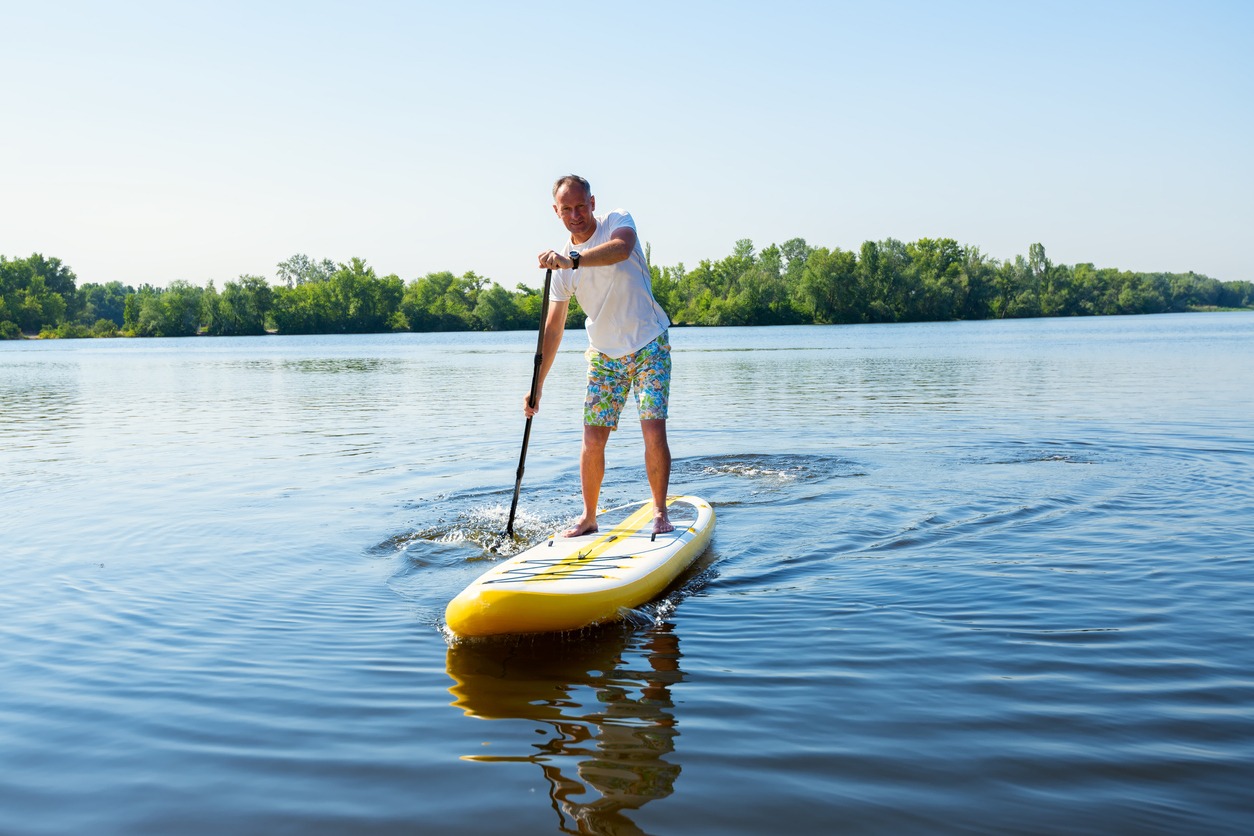
Stand up paddleboarders' best defense against cramping is a set of on-board relief strategies. When you're out on your SUP, it's essential to be prepared for muscle cramps that can strike at any moment. Always carry a reliable cramp relief product like HOTSHOT on your board to quickly address discomfort as soon as it begins.
Staying hydrated is key to preventing cramps, so remember to drink water and electrolyte-rich beverages before, during, and after your paddling session. While on your board, experiment with different foot positions and weight distributions to avoid overworking specific muscle groups. Take periodic breaks to move around on the board, stand up straight, and shift your weight.
To further combat cramping while paddling, try these quick relief techniques:
- Wiggle your toes and flex your feet
- Gently stretch your calves and hamstrings
- Rotate your ankles in circular motions
- Massage the affected area if possible
Post-Paddle Recovery Methods
In addition to on-board strategies, effective post-paddle recovery methods are crucial for preventing and managing cramps. After your paddleboarding session, apply ice packs to your feet and lower legs to reduce inflammation and soothe any pain in the feet. This can help alleviate muscle soreness and prevent future cramping.
Next, engage in light stretching and mobility exercises focusing on your feet, ankles, and calves. These movements will improve recovery and decrease the likelihood of cramping during future sessions. To further enhance blood flow and relieve muscle tightness, massage your feet with a foam roller or lacrosse ball, paying special attention to your toes and arches.
Don't forget to replenish lost nutrients by drinking electrolyte-rich beverages and consuming potassium-rich foods. This will help prevent cramping and support overall muscle function. If you're experiencing persistent foot and leg issues, consider getting a professional sports massage or visiting a physical therapist for targeted treatment. These experts can provide specialized care to address your specific needs and help you maintain peak performance on your paddleboard.

